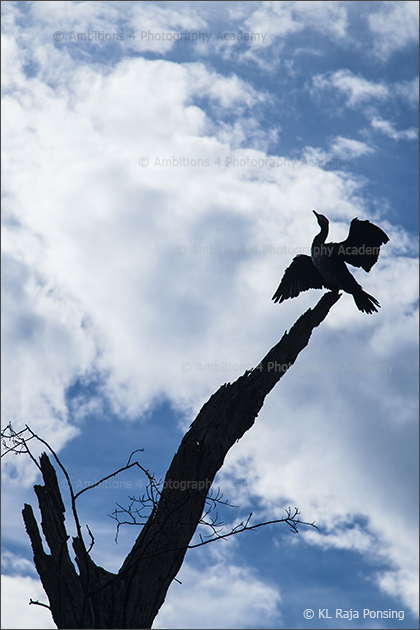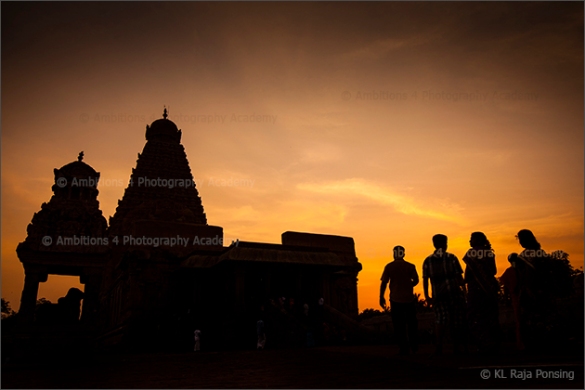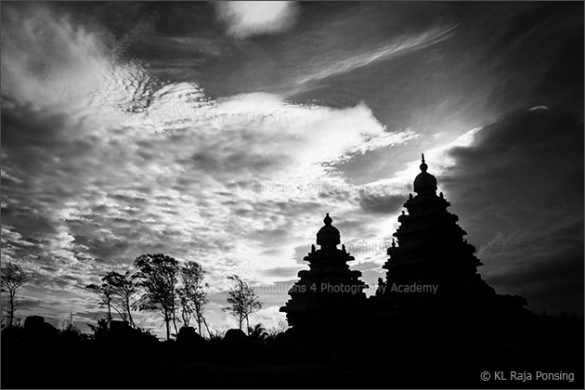- Find subjects with strong and definite shapes
- Use bright backlight eg. sun set or sun rise
- Choose to use spot metering or partial metering and take the exposure reading from the background in case of sunrise, the bright sky or clouds
- Under expose the shot by one or two stops exposure for brilliant and strong colours.
- Focus on the subject carefully and let the edge of the shape is really sharp
- Include some interesting foreground elements like shapely trees/buildings and let it get in the sky area of the shot.
- Try waiting for few birds or other activities as a part of the sky. This will avoid the emptiness and make the sky interesting
- If it is a twilight shot consider using a stable tripod to avoid camera shake.
- Avoid including moving objects while shooting in dawn. Birds in flight give a kind of blurry patches
- Consider off-shooting colours by shifting the white balance intentionally in to warm of cold feel. You can shoot using shade white balance and move the cursor in the white balance shift to amber side for warm silhouettes. Choosing to shoot in tungsten and move the cursor in the white balance shift to blue side for colder silhouettes.
- Shoot in RAW for better image variations through Camera Raw correction software.
for more examples of silhouettes click






